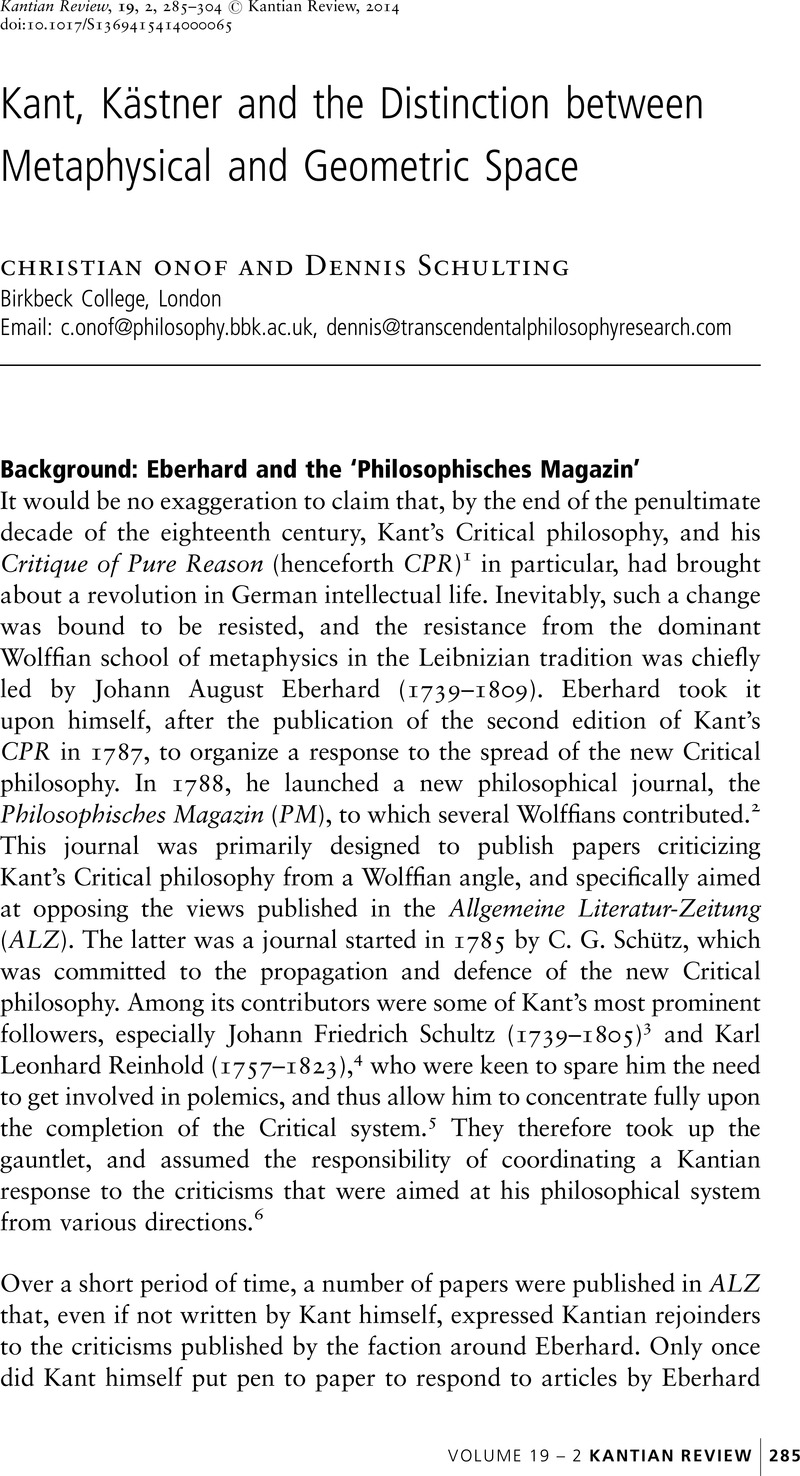Crossref Citations
This article has been cited by the following publications. This list is generated based on data provided by
Crossref.
Onof, Christian
and
Schulting, Dennis
2015.
Space as Form of Intuition and as Formal Intuition: On the Note to B160 in Kant'sCritique of Pure Reason.
The Philosophical Review,
Vol. 124,
Issue. 1,
p.
1.
Tolley, Clinton
2016.
Kantian Nonconceptualism.
p.
257.
Schulting, Dennis
2017.
Kant's Radical Subjectivism.
p.
257.
Schulting, Dennis
2017.
Kant's Radical Subjectivism.
p.
1.
Schulting, Dennis
2017.
Kant's Radical Subjectivism.
p.
295.
Williams, Jessica J.
2018.
Kant on the original synthesis of understanding and sensibility.
British Journal for the History of Philosophy,
Vol. 26,
Issue. 1,
p.
66.
Messina, James Anthony
2018.
Looking for laws in all the wrong spaces: Kant on laws, the understanding, and space.
European Journal of Philosophy,
Vol. 26,
Issue. 1,
p.
589.
Roche, Andrew F.
2018.
Kant’s Transcendental Deduction and the Unity of Space and Time.
Kantian Review,
Vol. 23,
Issue. 1,
p.
41.
Tolley, Clinton
2020.
Kant on the place of cognition in the progression of our representations.
Synthese,
Vol. 197,
Issue. 8,
p.
3215.
Raysmith, Thomas
2022.
Kant’s Original Space and Time as Mere Grounds for Possibilities.
Kantian Review,
Vol. 27,
Issue. 1,
p.
23.
Engler, Jann Paul
2023.
Transcendental and mathematical infinity in Kant's first antinomy.
Inquiry,
p.
1.
Onof, Christian
2023.
The Unicity, Infinity and Unity of Space.
Kantian Review,
Vol. 28,
Issue. 2,
p.
273.
Smyth, Daniel
2023.
Kant’s Mereological Account of Greater and Lesser Actual Infinities.
Archiv für Geschichte der Philosophie,
Vol. 105,
Issue. 2,
p.
315.
Lemanski, Jens
2024.
Kant’s Crucial Contribution to Euler Diagrams.
Journal for General Philosophy of Science,
Vol. 55,
Issue. 1,
p.
59.



